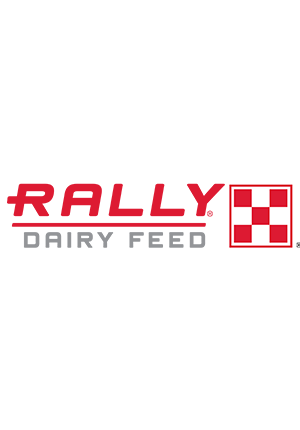
Stop Forage Hygiene Issues Before They Start
Cow : Management
There are three common issues when it comes to your forages – mycotoxins, molds and yeasts, and forage hygiene. And while all can be considered forage quality issues, each have distinct steps for prevention and management.
The least discussed of the three is forage hygiene. Unlike mycotoxins, molds and yeast which contaminate the plant itself, forage hygiene issues are a result of pathogenic organisms coming into silage or TMR from soil contamination and post-harvest handling. Dirt and organic matter can host pathogens, including clostridia, listeria, aspergillus fumigatus and more, serving as a source of these pathogens in stored feed and resulting in cow health and performance issues. The effects are varied by can include lower butterfat production, loose manure, reduced feed intake and other health challenges. Forage hygiene issues can also have longer-term impacts on the immune system and gut health, including gut lining damage, which can potentially result in death.
Once a crop is in the bunker, not much can be done to mitigate soil contaminants from impacting your forage quality. The best prevention? Preparation and a dialed-in harvest management strategy.
Reduce quality challenges before feed reaches storage:
One important conversation is which equipment to use to minimize the amount of dirt pulled in during harvest. For example, what type of mower blades should you use? Mowers with rotating discs make a vacuum and can suck up dirt. Blades with less angle/lift to the wing generate less vacuum and pick up less dirt. These blades work best in second and later cuttings which tend to be lighter than first crop, requiring less vacuum to pull the crop into the mower. Your nutritionist or agronomist can help inform equipment decisions.
It’s a difficult choice, but if you do have crops impacted by severe weather, consider the nutritive value of the crop at feed out and weigh the pros and cons of keeping the crop. What’s harvested will likely be highly contaminated with lower forage digestibility. The lower part of the crop typically has the most contamination. If you decide to harvest the crop, consider increasing the cutting height to three to six inches for alfalfa and six to twelve inches for corn silage. Increasing cutting height also reduces the amount of dirt, increases digestibility and reduces the moisture level of the forage.
Another strategy is to evaluate and adjust which fields are harvested for what. For example, consider using fields with a higher contamination risk for grain since you won’t bring in the contamination from the stalk. Then, you can use lower-risk fields for corn silage.
Start early to prevent forage hygiene issues before they happen. Work with your dairy nutritionist to develop a harvest management strategy and adjust your ration plan if an issue does occur.
The least discussed of the three is forage hygiene. Unlike mycotoxins, molds and yeast which contaminate the plant itself, forage hygiene issues are a result of pathogenic organisms coming into silage or TMR from soil contamination and post-harvest handling. Dirt and organic matter can host pathogens, including clostridia, listeria, aspergillus fumigatus and more, serving as a source of these pathogens in stored feed and resulting in cow health and performance issues. The effects are varied by can include lower butterfat production, loose manure, reduced feed intake and other health challenges. Forage hygiene issues can also have longer-term impacts on the immune system and gut health, including gut lining damage, which can potentially result in death.
Once a crop is in the bunker, not much can be done to mitigate soil contaminants from impacting your forage quality. The best prevention? Preparation and a dialed-in harvest management strategy.
Reduce quality challenges before feed reaches storage:
Create a harvest management strategy
 Preparation is key to help prevent a forage hygiene issue from occurring. Starting in the winter or spring, consult with your dairy nutritionist and agronomist on planting needs. Reflect on the previous years’ challenges and develop a plan to stop them from occurring again.
Preparation is key to help prevent a forage hygiene issue from occurring. Starting in the winter or spring, consult with your dairy nutritionist and agronomist on planting needs. Reflect on the previous years’ challenges and develop a plan to stop them from occurring again.
One important conversation is which equipment to use to minimize the amount of dirt pulled in during harvest. For example, what type of mower blades should you use? Mowers with rotating discs make a vacuum and can suck up dirt. Blades with less angle/lift to the wing generate less vacuum and pick up less dirt. These blades work best in second and later cuttings which tend to be lighter than first crop, requiring less vacuum to pull the crop into the mower. Your nutritionist or agronomist can help inform equipment decisions.
Adjust to Mother Nature
One thing you can’t plan for is the weather. Flooding late in the season can wash soil contaminants onto the lower part of the plant in hay and corn. Wind or strong storms can knock over plants, encouraging mold and disease issues in the plant and increased dirt pick up during harvest.It’s a difficult choice, but if you do have crops impacted by severe weather, consider the nutritive value of the crop at feed out and weigh the pros and cons of keeping the crop. What’s harvested will likely be highly contaminated with lower forage digestibility. The lower part of the crop typically has the most contamination. If you decide to harvest the crop, consider increasing the cutting height to three to six inches for alfalfa and six to twelve inches for corn silage. Increasing cutting height also reduces the amount of dirt, increases digestibility and reduces the moisture level of the forage.
Another strategy is to evaluate and adjust which fields are harvested for what. For example, consider using fields with a higher contamination risk for grain since you won’t bring in the contamination from the stalk. Then, you can use lower-risk fields for corn silage.
Manage forage hygiene issues
Forage hygiene issues can’t always be avoided. The best course of action when you identify a forage hygiene issue is to stop feeding the affected feed altogether. But sometimes that’s not possible. Other solutions include reducing the level of the problem feed in the ration or reallocating the feed to animals who will be less affected, such as older heifers. You could also increase the diet’s energy and digestibility to give the animal the nutrients needed to fight off a health challenge.Start early to prevent forage hygiene issues before they happen. Work with your dairy nutritionist to develop a harvest management strategy and adjust your ration plan if an issue does occur.


